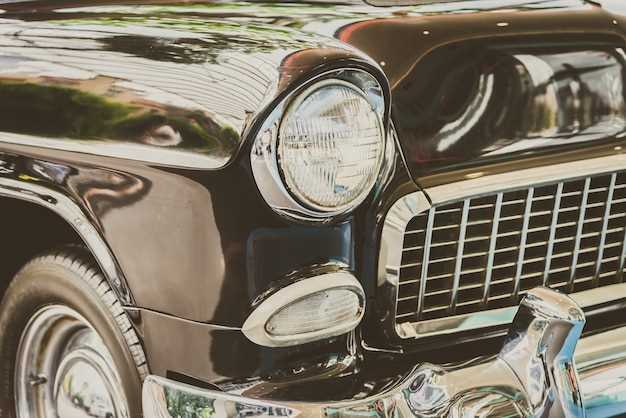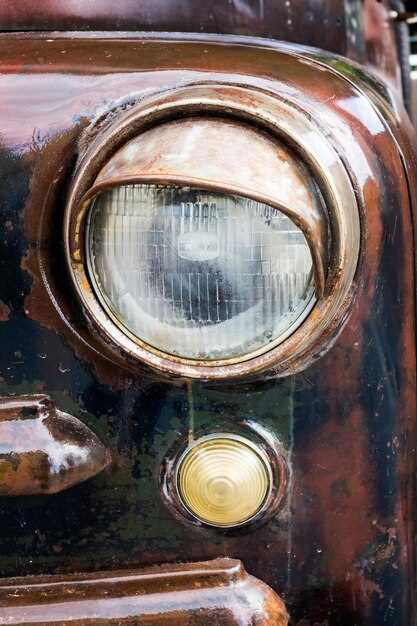
The Vehicle Identification Number (VIN) plays a crucial role in identifying and understanding the history of cars, including antique vehicles. When it comes to vintage automobiles, decoding the VIN can reveal essential information such as the year of production, manufacturer details, and model specifications. For enthusiasts and collectors alike, this process holds the key to uncovering the rich heritage behind classic cars.
Decoding a VIN is not just about numbers and letters; it is an art that combines knowledge of automotive history with attention to detail. Each character in the VIN serves a specific purpose, representing everything from the vehicle’s country of origin to its unique features. By mastering the art of VIN decoding, one can gain insights that enhance the appreciation of these remarkable machines.
In this article, we will explore the intricacies of VIN numbers, specifically tailored to antique vehicles. We will provide a comprehensive guide on how to decode these alphanumeric codes, helping you uncover the stories intricately woven into the fabric of classic cars. Whether you are a seasoned collector or a curious novice, understanding the VIN is an essential step towards fully enjoying the world of antique automobiles.
Understanding the Components of VINs for Vintage Cars

Decoding a Vehicle Identification Number (VIN) is essential for enthusiasts and collectors of vintage cars. Each VIN is a unique code that provides valuable information about the car’s origin, specifications, and history. Typically, a VIN consists of 17 characters, combining both letters and numbers, and is divided into distinct sections, each serving a specific purpose.
The first section, known as the World Manufacturer Identifier (WMI), comprises the first three characters. This part indicates the manufacturer and the country of origin. The following five characters make up the Vehicle Descriptor Section (VDS), which offers details about the model, body style, engine type, and series. These identifiers are crucial for distinguishing between various cars produced by the same manufacturer.
The ninth character is a check digit, essential for verifying the VIN’s authenticity. It helps to prevent fraud by ensuring that the VIN is valid and correctly assigned to a vehicle. Next, the Vehicle Identifier Section (VIS) spans the last eight characters, which includes the model year, production plant, and sequential number of the vehicle. This section is vital for tracking production numbers and finding specific details about a vintage car’s manufacturing history.
Understanding these components enables collectors to assess the value, rarity, and authenticity of vintage cars accurately. By decoding the VIN, enthusiasts can uncover a wealth of information that enhances their appreciation of classic vehicles and aids in restoration projects.
Step-by-Step Guide to Decoding VINs of Classic Automobiles
Decoding VINs (Vehicle Identification Numbers) is essential for understanding the history and specifications of vintage cars. By following these steps, you can interpret the various components of a VIN to uncover valuable information about classic automobiles.
Step 1: Locate the VIN
The VIN is usually found on the dashboard, visible through the windshield, or on the driver’s side door frame. For some vintage cars, it may also be located in the engine bay or under the hood. Make sure you have access to this number before proceeding with the decoding process.
Step 2: Understand the Structure
A standard VIN consists of 17 characters, which include both letters and numbers. Each section of the VIN corresponds to specific details about the car, such as the manufacturer, model year, and place of production. Familiarize yourself with these components before diving into the decoding process.
Step 3: Decode the Characters
The first three characters represent the World Manufacturer Identifier (WMI), indicating the manufacturer of the car. The next set of five characters is known as the Vehicle Descriptor Section (VDS), which provides information on the model, body style, and engine type. The ninth character is a check digit used to verify the validity of the VIN.
Step 4: Determine Model Year and Assembly Plant
The tenth character indicates the model year of the vehicle, while the eleventh character specifies the assembly plant where the car was produced. This information is crucial for collectors and enthusiasts to ascertain the car’s authenticity and historical significance.
Step 5: Review the Rest of the VIN
The final six characters in the VIN are the Vehicle Identifier Section (VIS), which provides a unique serial number for the specific vehicle. This portion often includes details relevant to insurance and registration, making it important for verifying the car’s identity and ownership history.
Conclusion
Decoding VINs of classic automobiles requires attention to detail but yields significant insights into vintage cars. By following this guide, you can enhance your understanding and appreciation of automotive history, making it easier to connect with the vintage car community.
Common Pitfalls and Misconceptions in VIN Interpretation

Decoding VIN numbers is essential for identifying the history and specifications of antique cars. However, several common pitfalls and misconceptions can lead to confusion among enthusiasts and collectors alike.
One major misconception is the assumption that all VINs are uniform across different manufacturers. In reality, VIN formats vary significantly between car brands and production years. For example, while a modern VIN consists of 17 characters, older vehicles may have shorter VINs that can lead to discrepancies when researching their history.
Another common pitfall is not taking into account the check digit, which is crucial for verifying the authenticity of the VIN. Many individuals overlook this character, assuming that if they have the right number of characters, the VIN is valid. However, the check digit serves as a checksum to prevent errors in transcription and must be calculated accurately for the VIN to be legitimate.
Some collectors mistakenly believe that certain characters in the VIN are universally applicable. For example, the letter ‘O’ and the number ‘0’ can easily be confused, especially in printed documents. This misunderstanding can lead to incorrect information about the vehicle’s make, model, or year of manufacture.
Additionally, many individuals assume that the VIN always reflects the original specifications of the car. Modifications and restorations, which are common in antique vehicles, can alter certain aspects of the car that the VIN does not represent. This can include changes to the engine, transmission, or body style, which may not be recorded in the VIN.
It is also worth noting that not every resource available for VIN decoding is reliable. Different databases may contain varying degrees of accuracy regarding historical data. Therefore, cross-referencing multiple sources is essential to verify the information obtained from the VIN.
Finally, while many enthusiasts rely heavily on the VIN for historical research, it is important to remember that it is just one piece of the puzzle. Comprehensive research often requires additional documentation, such as build sheets or service records, to provide a complete picture of the vehicle’s history.


